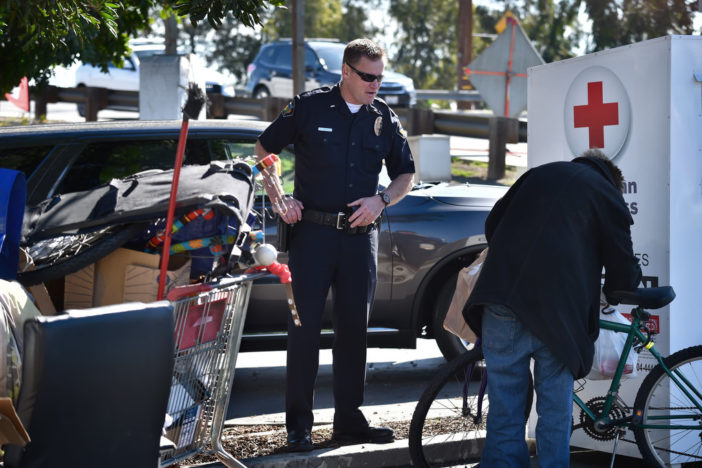Two homeless men listen quietly to offers of shelter on a chilly February morning in Tustin. More than 20 minutes after being roused from their bivouac behind a trash bin, they also will quietly resist those offers.
It’s the third Thursday of the month and despite appearances, Tustin Police Department’s Homeless Outreach is seeing results.
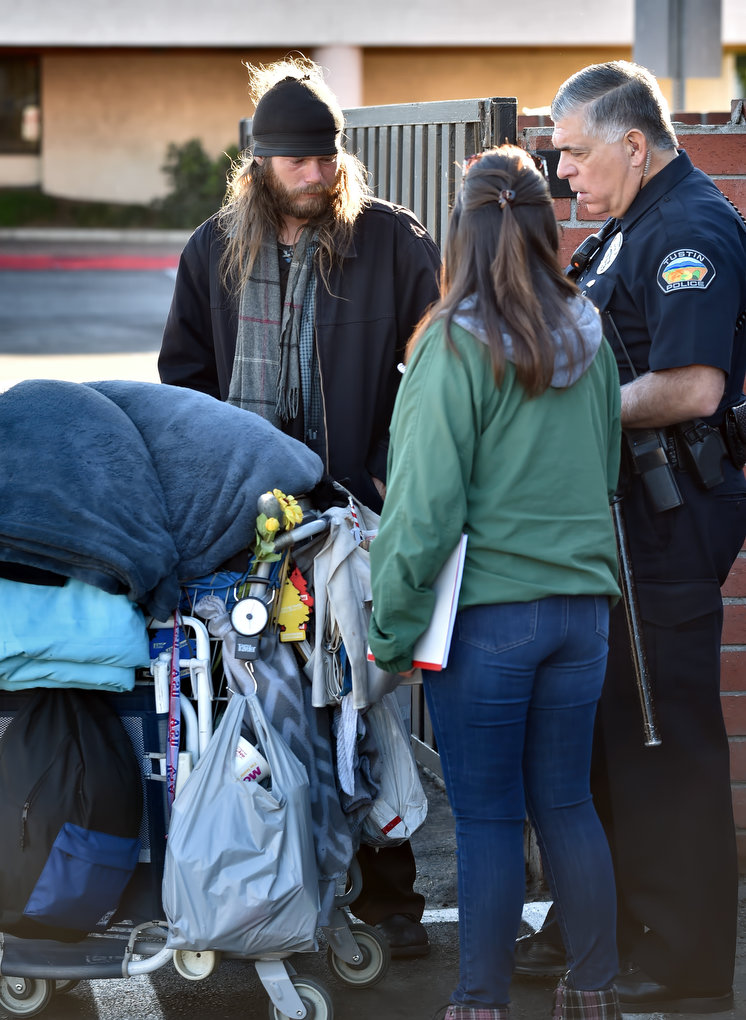
Tustin PD Officer Val Villarreal of the Community Impact Unit and Milena Andreani of the Orange County Health Care Agency talk to a homeless man about getting help through various services available to him.
Photo by Steven Georges/Behind the Badge OC
The end of the bus line along First Street tends to attract a concentration of homeless people. When the population grew noticeably larger about eight months ago, Tustin PD decided it was time to take a different approach.
“We wanted to address the situation, but couldn’t do it ourselves,” Lt. Brian Greene said.
And thus began the outreach program, a partnership with Orange County Mental Health, the Orange County Rescue Mission, City Net, and others.
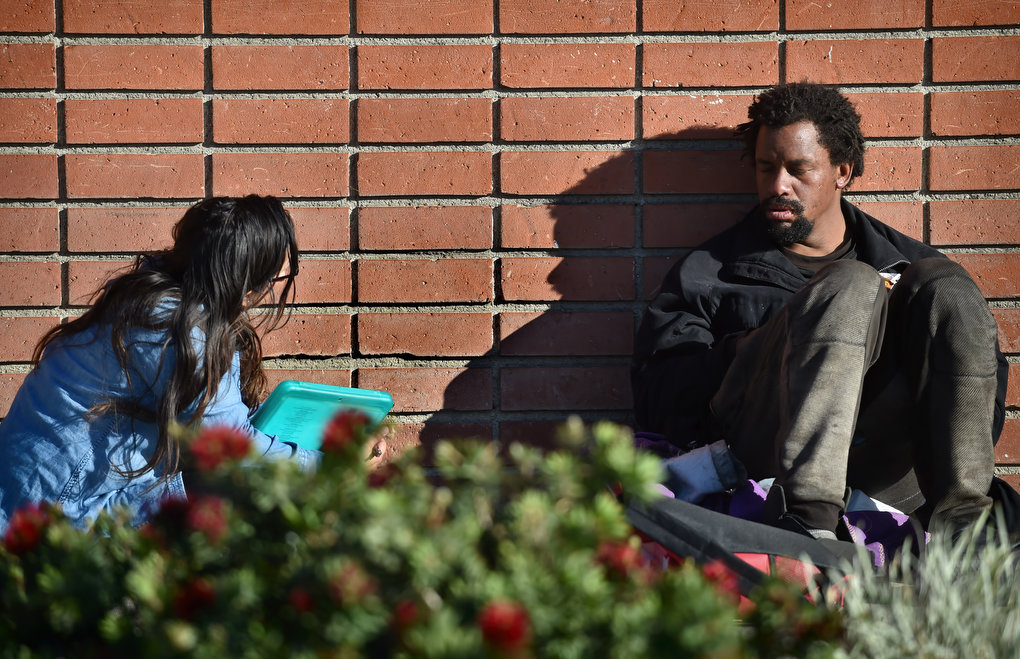
Paulette Holm of the City Net Homeless Outreach Team, left, talks to a homeless man on the street to try and match him with available services.
Photo by Steven Georges/Behind the Badge OC
On outreach days, an officer teams up with three social services workers, each representing their particular organization. They fan out across the city to the areas where officers believe the homeless are most likely to be.
Once they find a homeless person, the social service members of the team lead the way.
Greene says officers are there mostly to provide safety. The team members take turns trying to persuade the person or group to get housing, as well as a meal and shower, at their facility.
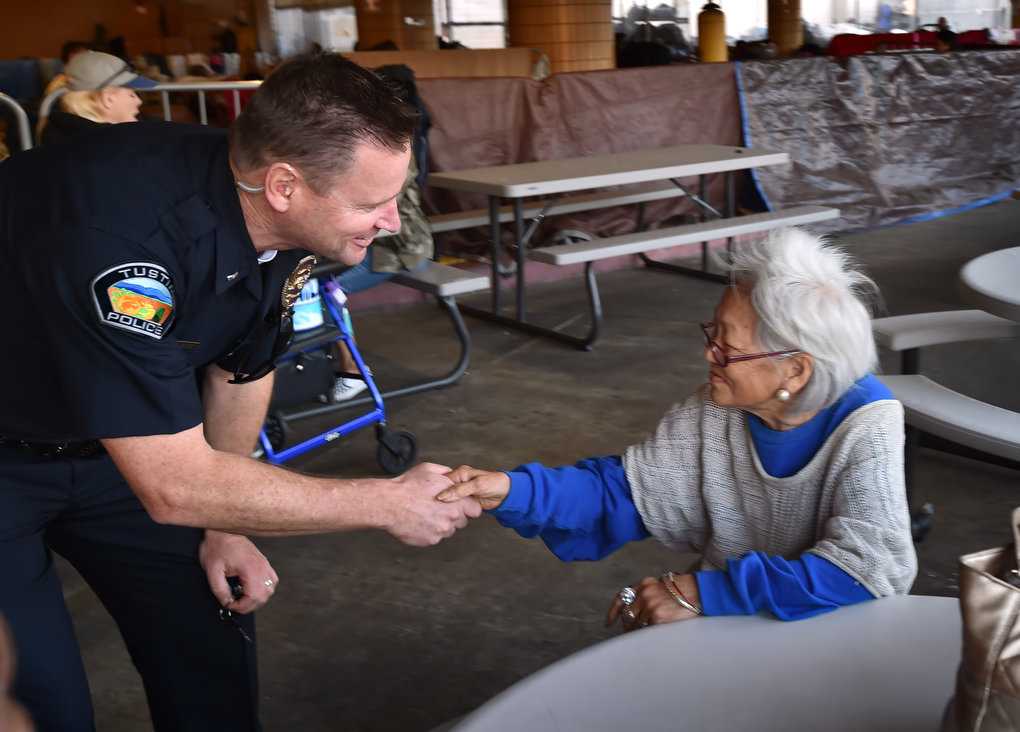
Tustin PD Lt. Brian Greene visits Lady Tran at The Courtyard in Santa Ana, a homeless shelter Greene helped get her into three months earlier.
Photo by Steven Georges/Behind the Badge OC
There’s no obligation for the homeless person to agree to anything. However, if they decline, they are advised of the various restrictions regarding remaining in some specific areas.
Greene knows there often is no instant payoff with programs like this and says it’s better to look at the bigger picture.
“It’s a continual effort,” Greene said. “Maybe you don’t reach them the first time, but maybe the third or fourth time.”
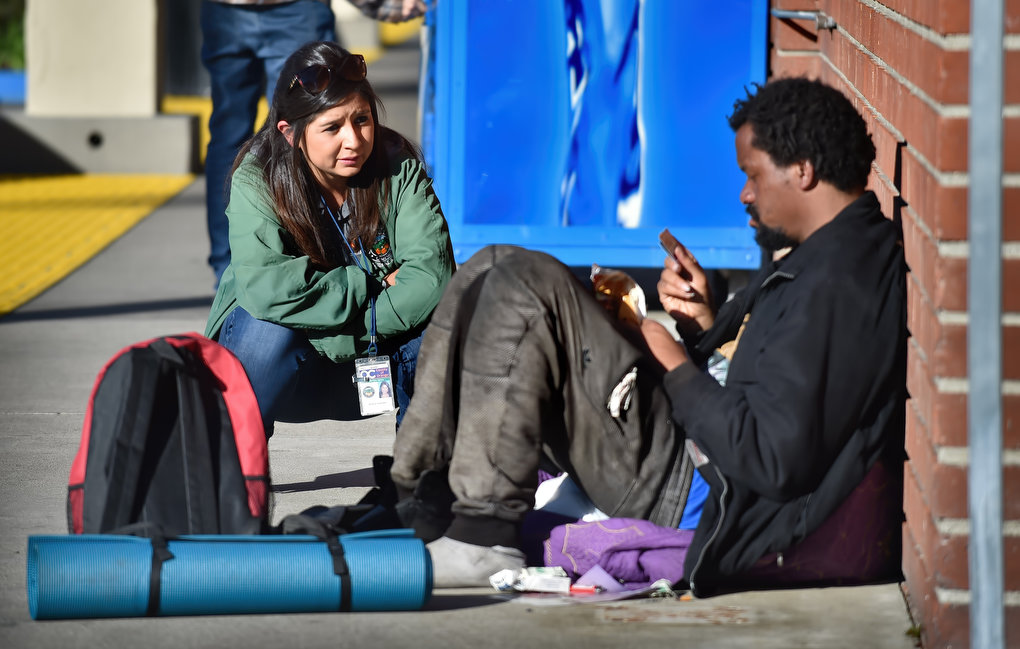
Milena Andreani of the Orange County Health Care Agency tries to talk a homeless man into getting the help he needs during an outreach outing with the Tustin PD.
Photo by Steven Georges/Behind the Badge OC
Over the three previous outreaches they’ve made 60 contacts and had 21 refusals, but also have been able to house seven people. Two were placed in a hospital for mental health evaluation.
Getting people housed and into services that provide mental health or drug treatment, or that allow them enough stability for possible employment, are the immediate goals. If those can be met, long-term solutions for homelessness are possible.
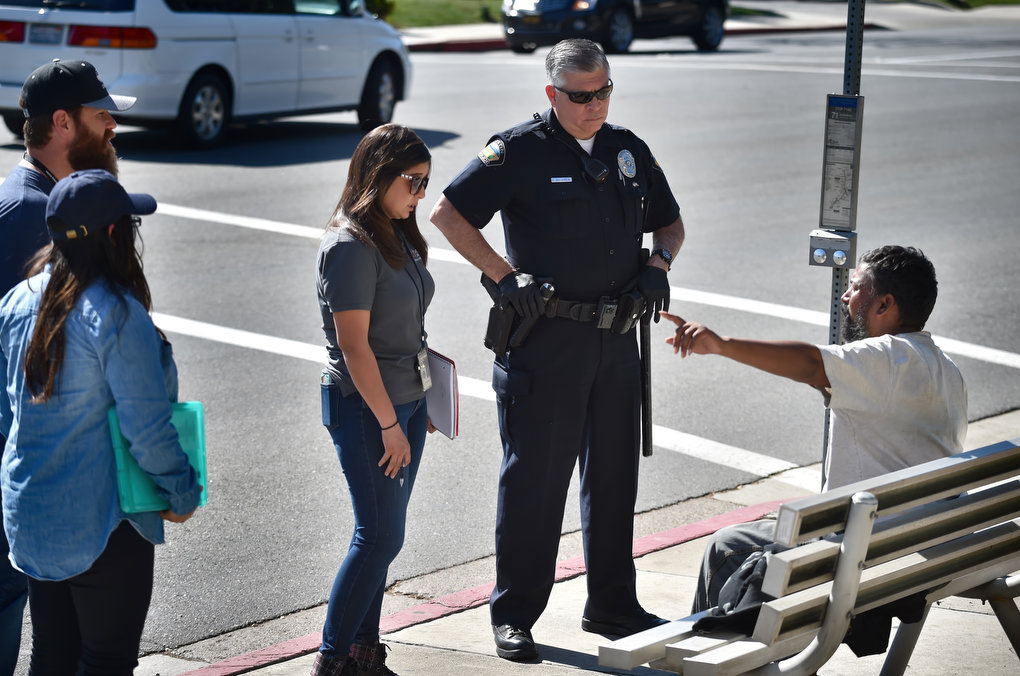
Milena Andreani of the Orange County Health Care Agency and Tustin PD Officer Val Villarreal talk to a homeless man on a bus bench. After a long talk, the man was taken into protective custody for mental health lodging.
Photo by Steven Georges/Behind the Badge OC
In most cases, jail is not a solution.
Moving a population of homeless people out of one area often leads to them ending up in another. This is a concern the Tustin PD is keeping an eye on, especially with the large homeless encampment alongside the Santa Ana River now broken up. A goal of Tustin’s outreach program is to provide viable options for those they contact. That, in turn, will hopefully help avoid the cycle of homelessness and displacement.
Greene points out one of the two men to illustrate just how difficult solutions can be, even to some who have previously accepted help.
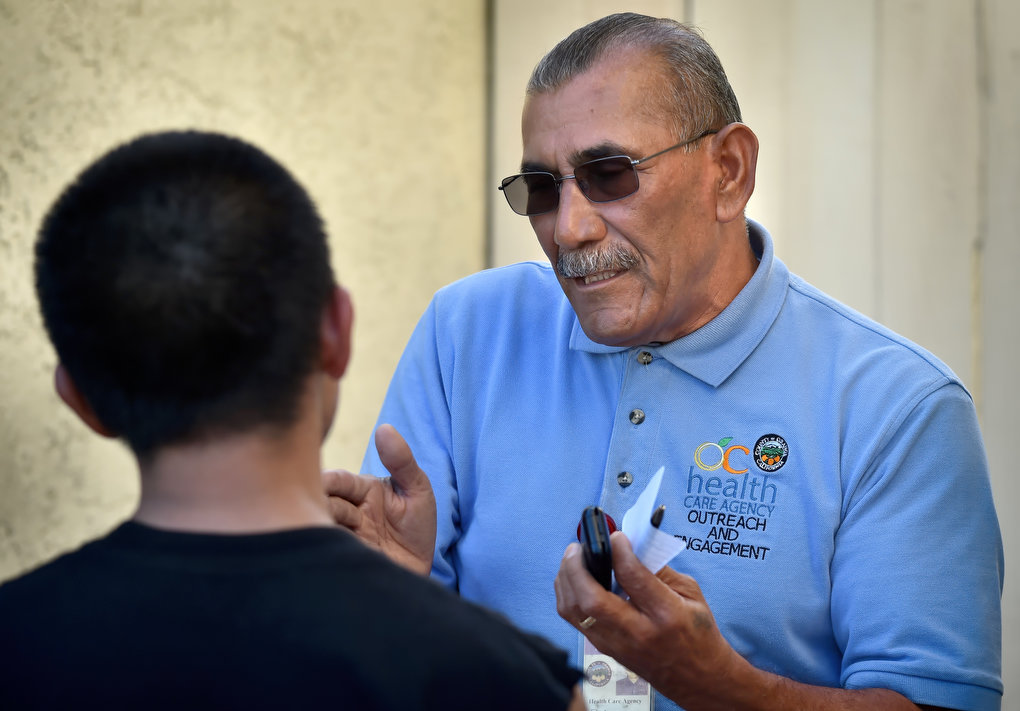
Frank Cabrera of the Orange County Health Care Agency talks to a young man living on the street as a task force makes its way through Tustin looking for people in need to get them the help that is available to them.
Photo by Steven Georges/Behind the Badge OC
The first example is a soft-spoken and mild-mannered man who is a familiar face to Tustin officers. Greene says he’s been aware of the man since he joined the police department 22 years ago.
Though technically trespassing, the man won’t be arrested as long as he moves on.

Milena Andreani of the Orange County Health Care Agency approaches a homeless man sitting on a bus stop bench to offer him help getting off the street.
Photo by Steven Georges/Behind the Badge OC
“It’s a balancing act,” Greene said. “If we arrest him, how much will we be able to deal with him when he gets out the next day?”
A 2017 census of the city’s homeless population shows the majority are white men age 50 or older, with either physical or mental health issues. About 21 percent have substance abuse problems. Some likely lost everything in the recession and have yet to find a way back.
Another 15 percent are Vietnam veterans. Often suffering from Post-Traumatic Stress Disorder and traumatic brain injuries, they are the most resistant to help.
“Our message to them is not law enforcement, but to find them housing,” Greene said.
Around the corner is a man newly arrived from Compton. With little more than a backpack, he’s hungry and cold. He accepts an offer to go to the Courtyard facility a few miles away in Santa Ana. Because of his police record in L.A. County, he’ll be transported by a police unit.
A sea of beds fills the space that once was downtown Santa Ana’s bus terminal. Since its conversion in October 2016, the Courtyard Transitional Center and Homeless Assistance Shelter houses about 425 people daily, with another 300 to 400 arriving during the facility’s open hours for a meal and a shower.
The man just transported from Tustin will get a bed, a pillow, and blankets, and a locked bin to keep a small amount of personal items. He’ll also get a meal and a shower.

Tustin PD Lt. Brian Greene recaps the day’s homeless outreach outing, comparing notes and exchanging ideas to improve the outreach efforts in the future.
Photo by Steven Georges/Behind the Badge OC
Just inside the center’s gate is someone Greene is eager to see — an elderly woman Greene contacted three months ago when she was sitting in the courtyard of a local business. Greene noticed she did not have clean or warm clothing or protective shelter, and she appeared very frail. She accepted the offer for assistance.
Today, she is clean and looking well fed and rested. Chatting with three men at a small, round table, she recognizes Greene immediately.
He gives her a pat on the back while they chat about how she’s doing. She eventually goes back into the sea of beds to get on with her day. As he watches her go, he sees a program getting results. Bit by bit, person by person, he sees hope.
Back at Tustin PD headquarters for a debriefing, the officers discover the outreach has gotten housing for three people and mental health hospitalization for another. Greene announces that a nurse will join the group next month.
“The chief would love to hear people say we’re being too nice,” Greene said. “That’s a good problem to have. Again, it’s a careful balance.”
 Behind the Badge
Behind the Badge
